
Build a Better Heraldic Tabard
It is a sobering thought to realise that while the SCA College of Heralds spends many hours researching and encouraging appropriate heraldic display in the populace, the members spend relatively little time on their own display.
The design below was one I developed for Crux Australis Herald’s tabard, which I researched and made for the Kingdom of Lochac’s first Coronation. It is no harder to make than most of the tabards around and is a lot more authentic!
Considerations
The tabard design should be based on historical examples
The materials should be both historically and theatrically appropriate
The construction should be sturdy
The decoration should be historically appropriate and provide a suitably rich effect
The tabard may need to be wearable by heralds who may vary widely in size and shape :)
The tabard may need to be cleaned periodically.
Historical Notes
The Tabard or Houce (heuk) des Armes originated as a standard item of military clothing. Although it went out of fashion in the late 15th century, it remained the standard costume of the herald until our current day.
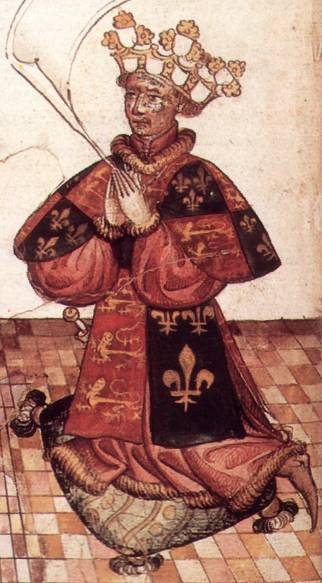
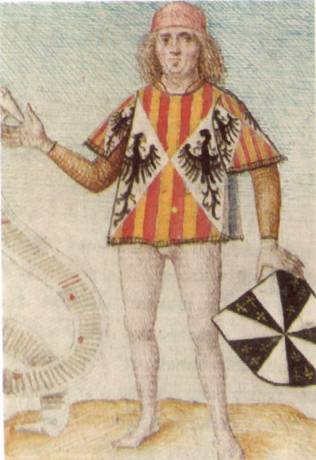
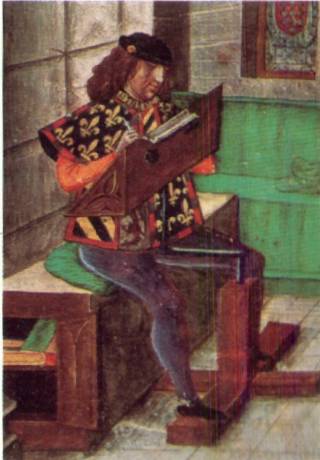
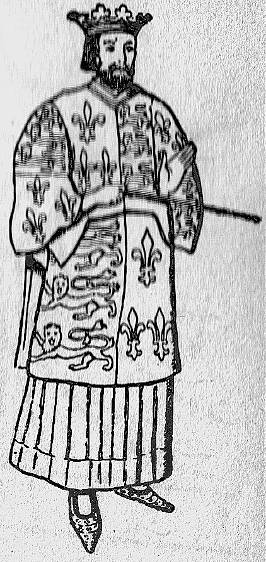
Fig 1 Garter King of Arms, c1415 |
Fig 2 Sicilian Herald, c.1420 |
Fig 3 Burgundian Herald, mid 15thc |
Fig 4 Garter King of Arms, c1420 |
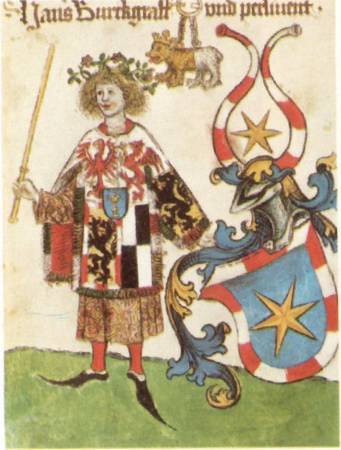
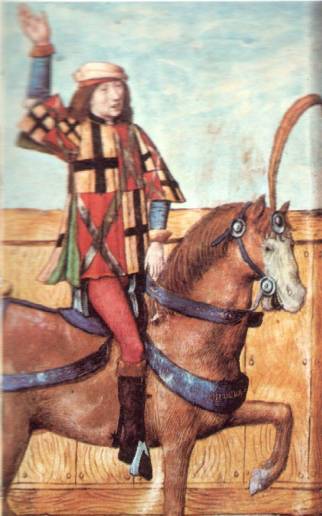
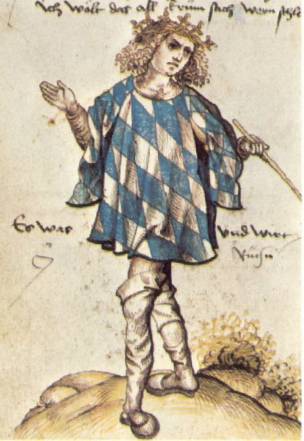
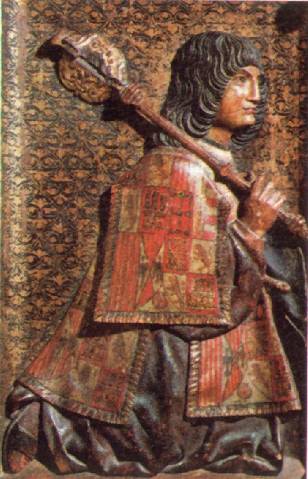
Fig 5 Brandenburg Herald, Mid 15th c |
Fig 6 Book of the Tourn-ament of King Rene c1450 |
Fig 7 German Herald, late 15thc |
Fig 8 Spanish Herald, c1510 |
As can be seen in the many examples here, the tabard was worn over regular clothing – there was no official uniform or any headwear specified for a herald. Lower ranking heralds should always wear the tabard athwart, with the sleeves front and back, to indicate their lower status. Historically this applied to pursuivants; in our case to pursuivants extraordinary and cornets. This practice can be seen on the front heralds in figure 9.
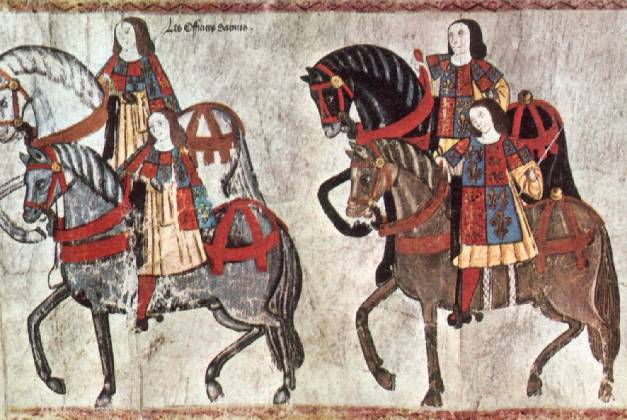
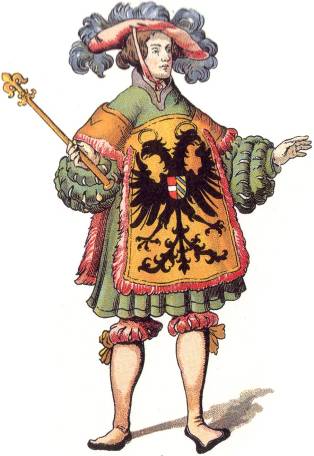
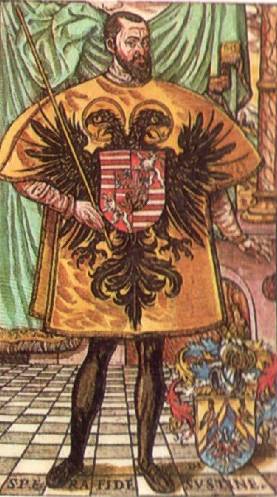
Fig 9 Heralds to Henry VIII |
Fig 10 Early 16th C German Herald |
Fig 11 Herald to Roman Emperor, mid 16thc |

Apart from the tabard, there were few symbols of the heraldic office. A short white staff was used as the symbol of the office throughout our period in England, whilst in Germany the heralds bore staffs in the colours of the sovereign. These staffs are seen with round finials and also fleur-des-lys finials.
During the 15th century, some European Kings of Arms wore a half cape of rich fabric, with a appliquéd square on the front, depicting a tournament, as seen in figure 12. I think that our College of Heralds could also consider such items, but let us start with a better tabard!
Fig 12 Herald from Book of the Tournament of King René Mid 15th
c
Design
T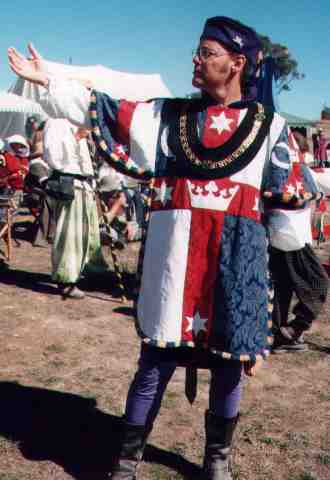 he
standard SCA herald’s tabard displays the crossed gold trumpets,
which are the symbol of the SCA College of Heralds. Historically, a
few rare heralds displayed the arms granted to their office, but each
King of Arms had a different device - the College of Heralds did not
have its own arms. In general, heralds bore the device of their
sovereign: the King’s voice wore the King’s arms. Throughout
most of our period, the device was depicted in full on the front and
back and on each sleeve (where the sleeves are minimal, this may be
reduced to front and back only).
he
standard SCA herald’s tabard displays the crossed gold trumpets,
which are the symbol of the SCA College of Heralds. Historically, a
few rare heralds displayed the arms granted to their office, but each
King of Arms had a different device - the College of Heralds did not
have its own arms. In general, heralds bore the device of their
sovereign: the King’s voice wore the King’s arms. Throughout
most of our period, the device was depicted in full on the front and
back and on each sleeve (where the sleeves are minimal, this may be
reduced to front and back only).
For an SCA group herald, I propose that we adopt this historic approach and make a tabard that bears the appropriate group device in full on front, back and each sleeve. For heralds who are not attached to specific group, the device of the College of Heralds is appropriate – this should again be worn on front, back and both sleeves. It is not period practice to quarter the device of the group with the College of Heralds’ device, so do not be tempted by this TSCA fashion! Laurel King of Arms has confirmed that the full depiction of arms is now the preferred use within the College.
Fig 13 Crux Australis Herald (photo by the author)
